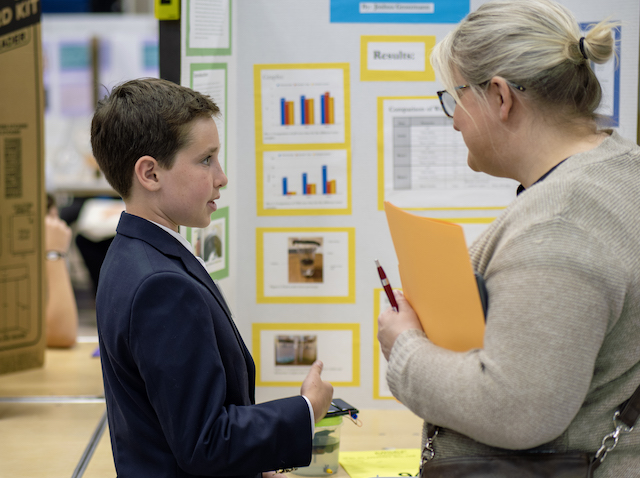High School Fairs
Rules & Guidelines
Review the 2024-25 MSEF High School Manual for requirements, regulations and expectations for the fair.
- Click any part of the Table of Contents to jump to the section you need.
- Use the ‘search’ or ‘find’ function to search the PDF for any keywords or vocabulary.
Print out or ‘Make a Copy’ of the Science Fair Checklist to keep track of your progress.
Research Plan Templates (please make a copy to edit)
Template: Standard
Template: Engineering
Template: Engineering with Humans
Template: Human Subjects
Template: PHBA – Biological Agents
Template: Vertebrate Animals
High School Students interested in starting research over the summer should review this Student Newsletter to avoid disqualification. Email src@scifair.com with questions.

Project Requirements:
Please see manual for more details
1.
A project may include no more than 12 months of continuous research and may not include research performed before January of the year prior to the fair. Projects that build on or progress from previous years work are called ‘continuation projects’ and must demonstrate a substantive difference in focus and methodology.
2.
Individual projects must be entirely the work of the individual student and team projects (up to 3) must be entirely the work of the team. Project ideas should be developed by students and not assigned. Please review the Ethics Statement for more information about the role of mentors in supporting student work.
3.
Required forms must be submitted to the Massachusetts Statewide Scientific Review Committee for approval BEFORE starting experimentation for restricted areas of research and before participating in the Fairs for all project. Use the templates above to create a thorough research plan for review. More information on paperwork and approval requirements can be found here in the Project Approval Decision Guide.
4.
There are five primary components to a Science & Engineering Fair project: (1) a submitted research plan, (2) a project notebook to record each step of the project – handwritten preferred. (3) A lab report or research paper, complete with works cited and an abstract. (4) A visual display for presentation at the Fair. Consult the manual for restrictions on materials for the Fair presentation and venue. (5) An oral presentation about the project. More information and recommendations can be found here.
5.
Students must work with qualified adults as outlined in the High School Manual. This includes a teacher and an ‘adult sponsor’ for the project, which may be the same person. Some projects may also require a ‘qualified scientist’ or ‘designated supervisor.’ Adults help students acquire background information, teach the techniques required, and to monitor for safety. Teachers are also responsible for communication with the Regional Fairs and MSEF about participation. Review the Manual section on ‘Roles and Responsibilities of Students and Adults’ (page 8)
6.
Projects should show evidence of scientific research, engineering design, computer science, or applied mathematics. More information on project methods can be found here. Projects that are demonstrations, ‘library’ research or informational projects, ‘explanation’ models, or kit building are not appropriate for competition in MSEF.
High School Project Categories and descriptions can be found here.
The Judging Experience
Judges (professionals and academics in STEM) volunteer their time to review student projects. Judge scores are based on a student’s understanding of their project, not it’s sophistication. Review the Judges Rubric with your students to help them prepare for the experience. The judge rubric is new for the 2024 High School Fairs.

Frequently Asked Questions
- What is pre-approval?
- What are the forms I may need to submit for review and approval?
- What is a continuation project and should I have a form 7?
- What are the pathways to MSEF?
- What are the materials required to be judged at MSEF?
- What are the components I should include on my display board?
- What are the guidelines for a final Project Report?
- What are the guidelines for Lab Notebooks?
- Can I update my project between the Regional and the State Fair?
- What Rubrics are used to judge? (for reference only)
- Do I have to be at the fair the full day?
- How do we avoid conflicts with SAT or AP exams?
- Why are there two sets of safety guidelines?
- What is ISEF?